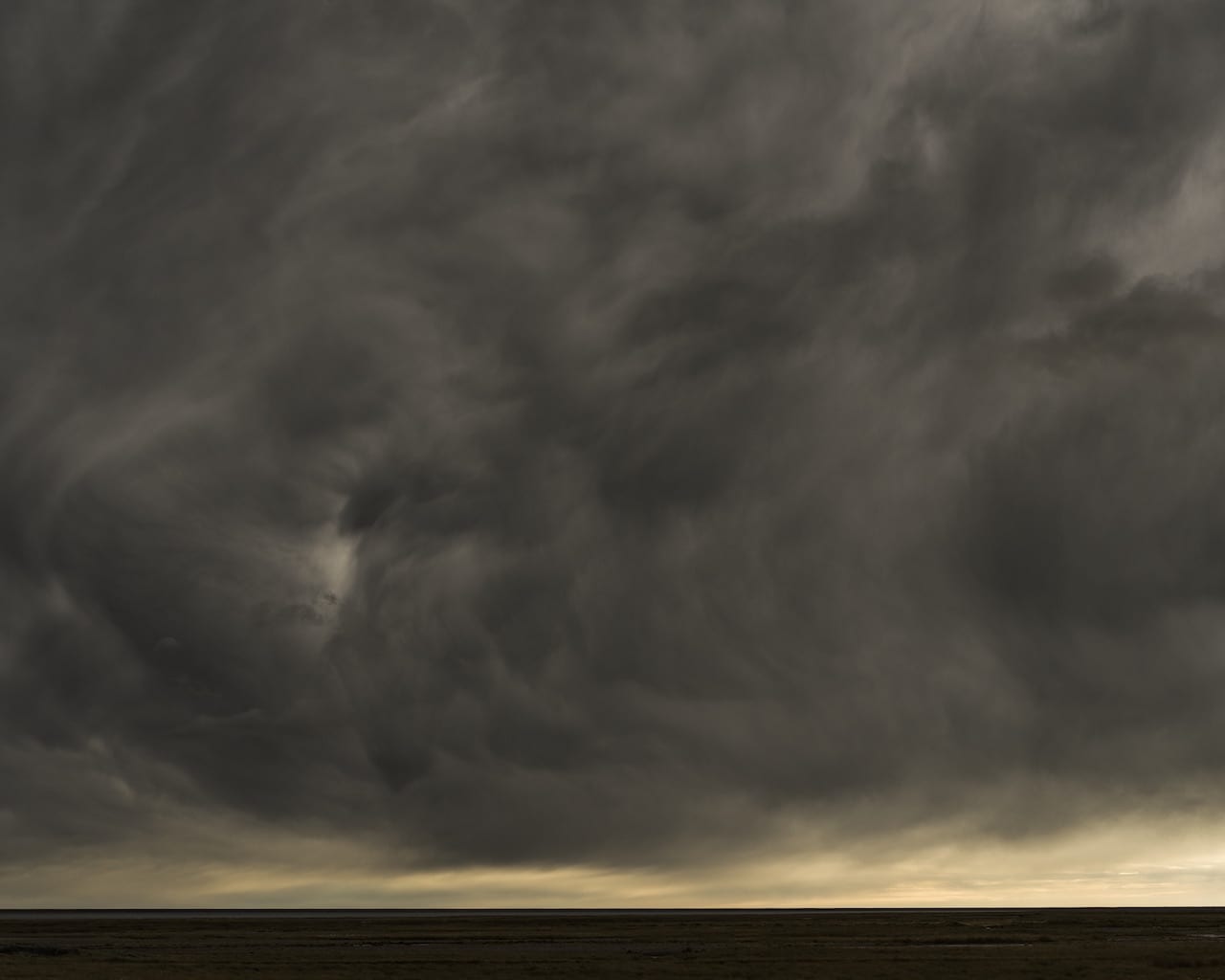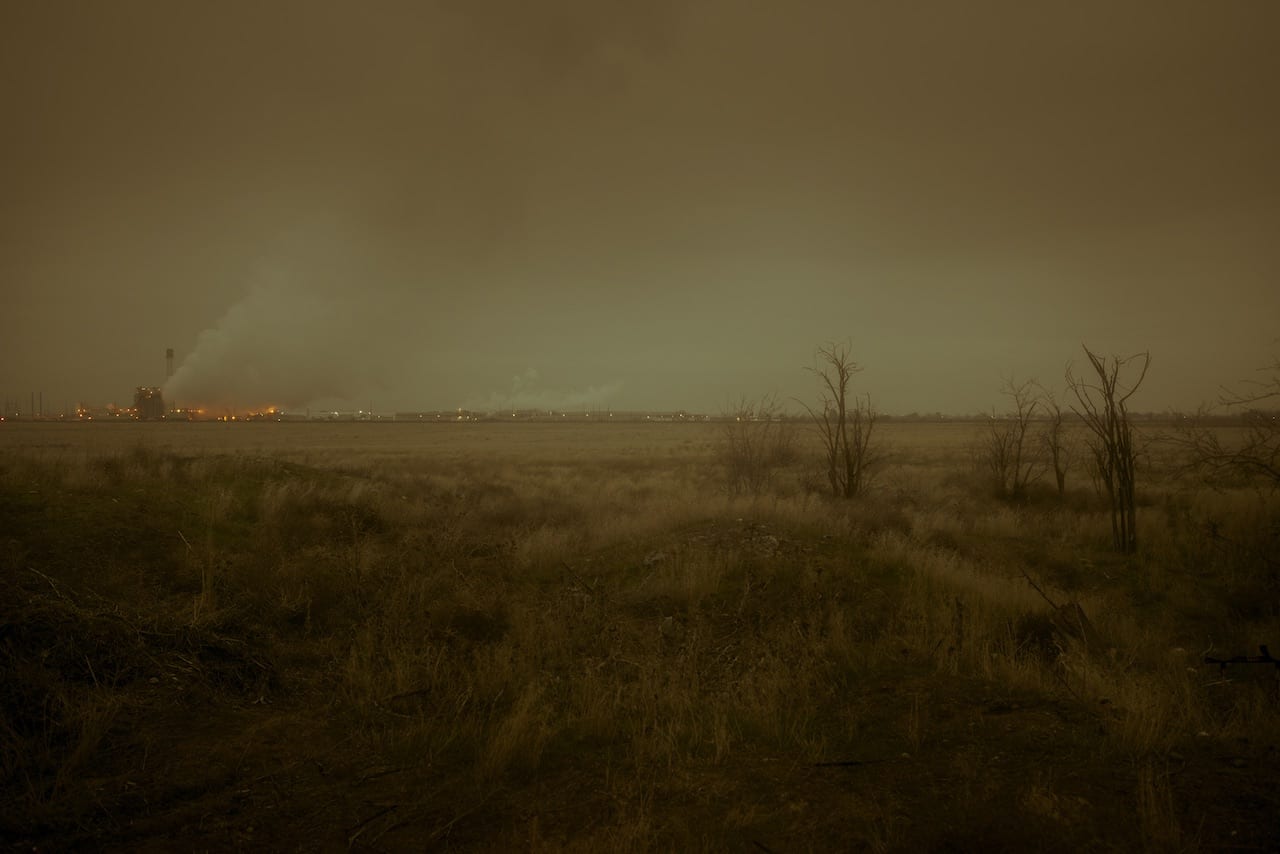To look through Todd Hido’s lens is to view the world darkly. The San Francisco-based photographer’s entire oeuvre of compelling visual narratives is shrouded in inky obscurity, and in this regard, his latest work is no exception. The difference is that for the first time he has departed from his usual territory of suburban landscape and its relation to his own troubled childhood. Instead Bright Black World results from extensive travels abroad, and is steeped in a deep sense of pessimism about the future from the perspective of the present, attempting to “photograph the darkness that I see coming”.
There is something universally foreboding and immense happening here; work that captures nature on an awesome scale. And yet it can be read as a metaphorical measure of our individual existential lives, a dark poem alluding to our preconditioned mortality. His landscapes are magnificent in their brooding seduction, inspired by Norse mythology and the concept of Fimbulvetr – the long, harsh winter that precedes the end of Earth. Hido travelled to places he’d never visited before to capture these spectacles of natural devastation and melancholy, including the chilly vistas of the Norwegian tundra.
As in the grand tradition of artists, poets and writers, he sees himself as a wanderer, taking us on his journey. He responds intuitively to what he finds before him, attempting to capture a sense of something from the atmosphere of a place, then narrows it down to articulate meaning. The frame of his car windscreen is the imposed limitation of the cinemascopic filter through which he photographs, at times allowing the arbitrary effect of watery abstraction to influence the scene.
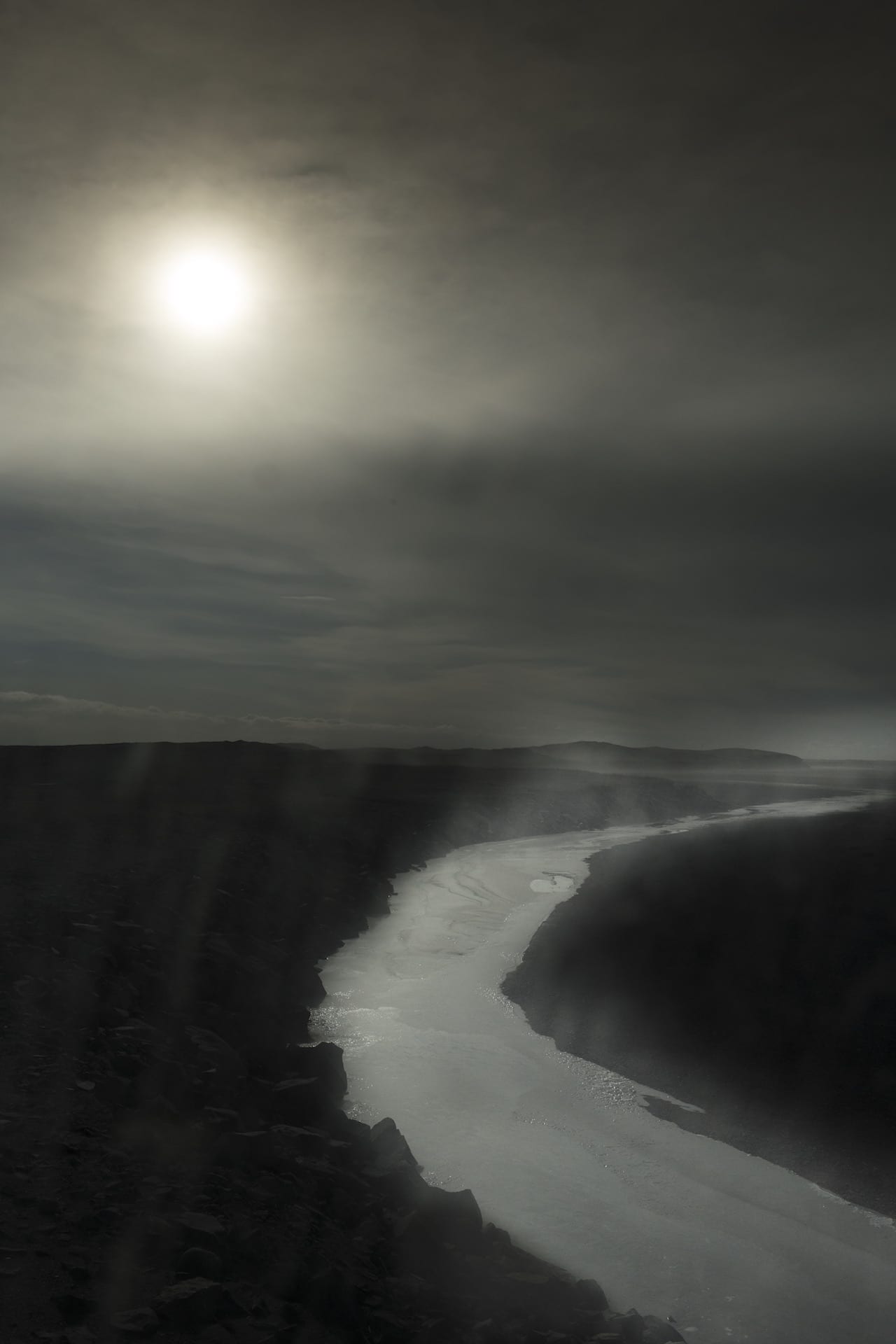
Nature is the predominant subject matter of Bright Black World. The title itself is a contradiction, an immediate dialogue of conflicting words pointing to the age-old Biblical dialectic of good and bad, light and dark, the glimmer of hope that lies in the sublime catharsis of pathos, etched here in the faint glow of light, pulsating in every photograph. There’s a mysterious allure to this latest work from a photographer who has previously shot almost exclusively in North America, but Hido hints at the deeper polemic that motivated him on his journey with a short text at the beginning of the book: “It’s been said that Inuits have many words to describe white. As the polar snow caps melt faster than we ever imagined, I wonder how long it will be before we have as many words to describe darkness.”
This change in direction came at a pivotal time in Hido’s career. “Right before I started Bright Black World, I finished a mid-career survey titled Intimate Distance, published by Aperture,” he tells me. “The culmination of that was a great demarcation point to shifting my attention to something new. It also happened to coincidence with an ever-darkening political situation in the United States.
“There is no question that this work is about the physicality of climate change that is occurring now. Unless you are in full-blown denial, as unfortunately many people are, these changes are coming far quicker than anybody expected… But, simultaneously, in a metaphorical sense, it is also fuelled by the disgusting political situation that we have in America at this point in time.”
The chiaroscuro effect is the rich palette with which Hido photographs this world, and it’s difficult not to be reminded of the great British painter JMW Turner, who articulated his frustration to touch and so envisaged the emotional manifestation of darkness when he said, “If I could find anything blacker than black, I would use it”.
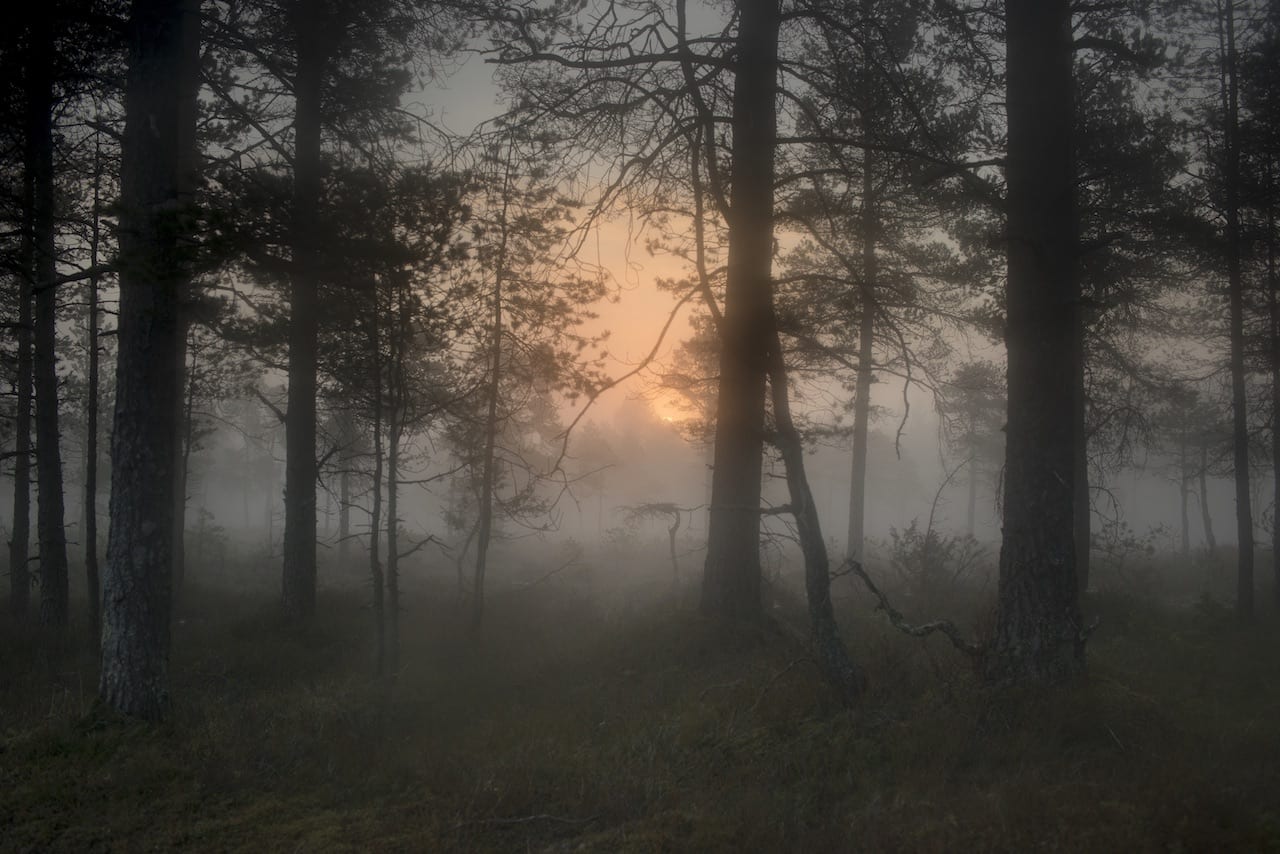
In one of Turner’s greatest works, Snow Storm: Hannibal and His Army Crossing the Alps, completed in 1812, he depicts a swirling, apocalyptic storm. The dimly-lit sun glows faintly through menacing black cloud, looming over the army below, small and insignificant – the painting representing the unbiased violence of nature and humanity’s subservience to its power and unpredictability. In another, Snow Storm: Steam-Boat off a Harbour’s Mouth (1842), a vortex of malevolent sky and fuming sea engulfs a ship in its torrent, inspired by Turner’s (most probably fictional) visceral experience, lashed to a mast in the eye of a storm.
The photographs of Bright Black World conjure up something similar, the portability of the camera bringing the viewer into the scenes in an almost experiential way, at once feeling the cold and the wind. Hido’s colour palette is distinct, and somehow goes against the grain of the dispassionate realism attributed to the American photographic tradition established by modernism and the straight documentary approach of Walker Evans – though he fully endorses Evans’ famous statement about light being the big tool.
For Hido, colour is a kind of protagonist, luring the viewer into his frame with blocks of vibrant reds, blues and yellows, set against silhouetted blacks, reminiscent of the 18th-century German Romantic painters. There’s no intentional correlation, says Hido, “Though I have seen their paintings before, I would not chalk them up as some of my biggest influences. But I would agree though that we are both very much interested in dramatic light.”
Consciously or not, Hido’s work is punctuated with reminders of the paintings of Caspar David Friedrich or Carl Philipp Fohr, the latter of whom painted The Ruins of Hohenbaden (1814–15). Ruins for the Romantics were an allegorical subject to express and reveal our deepest fears and desires, reminding the audience of our ultimate demise and appealing to our unconscious death wish. Hido’s contemporary interpretation shows the ruins of burnt-out cars.
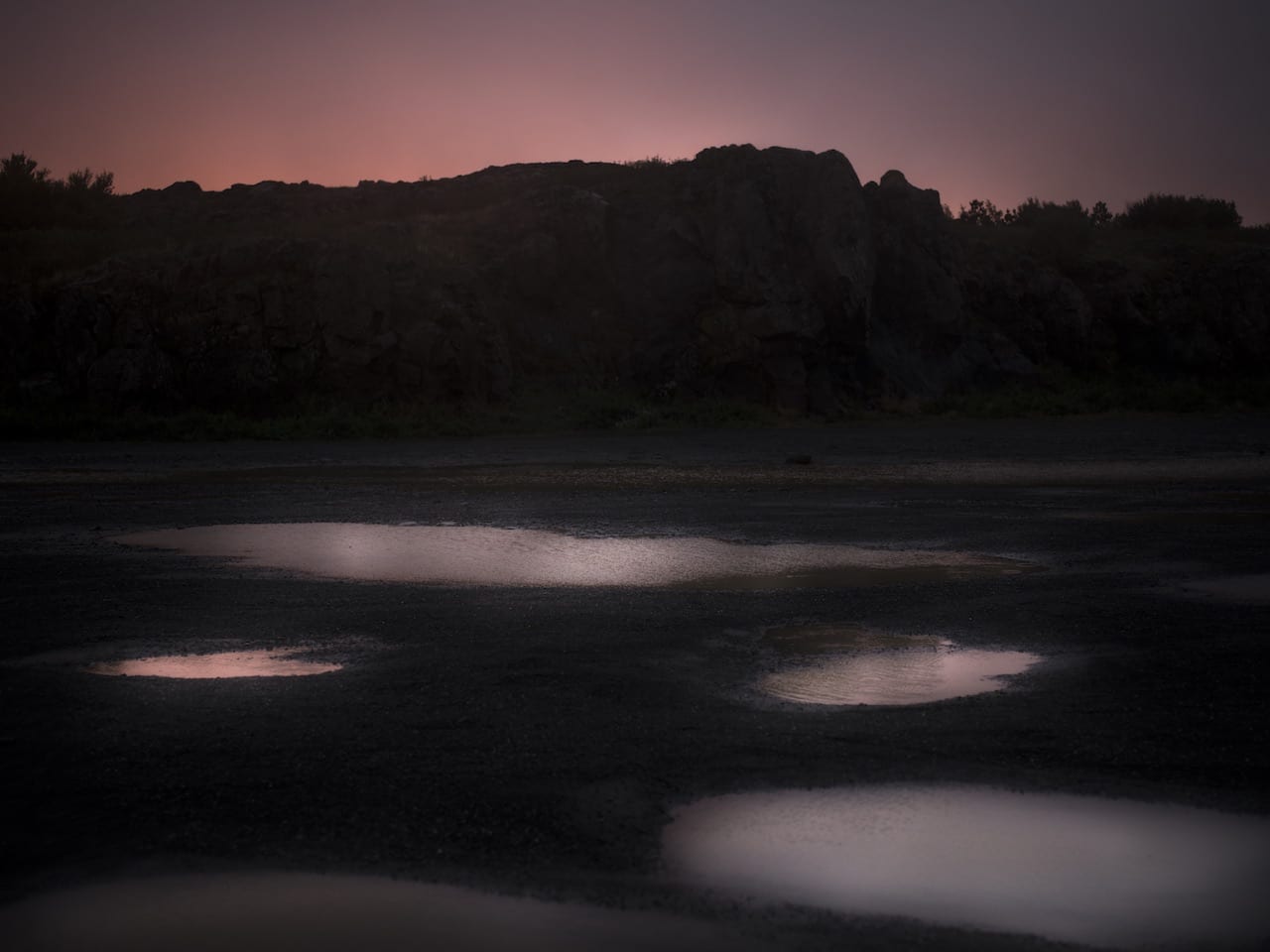
Elsewhere, a painting by Friedrich of an open window in his studio is reminiscent of a photograph at the very beginning of Bright Black World of a brightly-illuminated window, closed by an almost transparent net curtain, and in tandem with this particular image is one following it of a solitary woman, classically dressed in what resembles Grecian clothes, her back turned to the viewer. Perhaps this is a metaphor that we are turning away from the realities of our wilful destruction and looking into a dark future.
Friedrich’s famous painting, Wanderer Above the Sea of Fog (1818), depicts the back of a solitary man looking out across the mist into the mountainous horizon, the interpretation of which is the duality of insignificance and awe, whereas with Hido, the solitary lady contemplates only the dark. The German Romantic painters saw themselves bearing witness to the overwhelming awe of God, but for Hido, we bear witness to a profound emptiness.
A red line running deep throughout Hido’s work is a sense of the strangeness of the familiar. In Freudian terms, the unheimlich is linked to the disorientation of finding something homely that is simultaneously disquieting. In Hido’s previous works, House Hunting and Roaming, the suburban home is a motionless place that is laid bare of its innocence. Here, the representations of homes at night belie a menacing and cold glow, and in many respects these houses take on a personality, an anthropomorphic portrait of what threat dwells inside.
By extension, with the photographs of Bright Black World, the planet on which we exist seems like unfamiliar territory; strange and bewildering. It appears far removed from the idealisation of the landscape by photographers such as Ansel Adams, who attempted to celebrate American identity via natural beauty. Conversely, Bright Black World enters into a void. It is a world without humanity; some cataclysm has wiped us out. This dystopian future is by no means a fiction but a plausible reality, an ominous black cloud hanging over our heads.
toddhido.com Bright Black World is published by Nazraeli Press, priced $75 nazraeli.com
